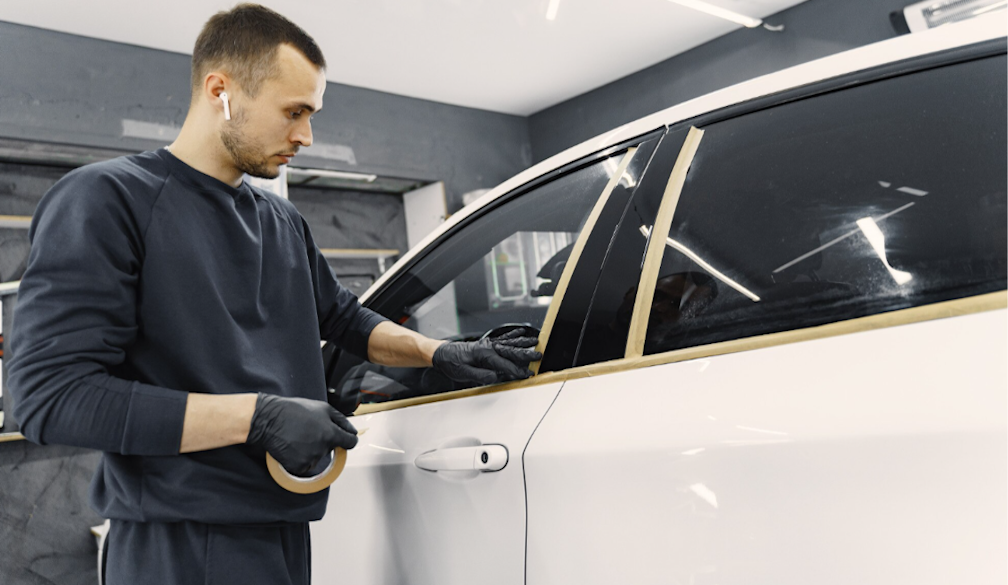Expert Automotive Window Tinting Services: Boost Your Car's Aesthetics & Privacy
- Written by Times Media

Upgrade your ride with automotive window tinting services. Boost your car's aesthetics and privacy. Try it today!
The Aesthetic Upsides of Window Tinting
Car window tinting involves applying a thin film to vehicle windows to enhance both appearance and performance. It reduces heat, blocks harmful UV rays, and improves privacy while also offering extra protection by making glass more resistant to shattering. Depending on local regulations, different shades and materials are available to suit aesthetic preferences and functional needs.
Tinting doesn’t just improve looks—it creates a more comfortable, private environment for both drivers and passengers. With the right film, you can protect your skin, preserve your car’s interior, and give your vehicle a sleek, stylish finish. Hiring professionals for installation ensures a flawless result, long-lasting performance, and full compliance with legal standards.
Tinting instantly enhances a car’s overall appearance. A well-tinted vehicle often looks more polished and modern, giving it an edge on the road. Beyond looks, window films also contribute to increased resale value since a well-maintained and stylish car tends to attract more buyers.
Different tint shades can dramatically affect a vehicle’s vibe. Light tints offer a subtle and refined look, while darker shades provide a bold and mysterious appeal. The right tint should complement your car’s colour and model for a cohesive and elegant finish.
Choosing the right tint shade isn’t just about style—it’s also about practicality. Darker films can block more heat and light, while lighter tints might offer better visibility. Consulting an expert helps ensure your tint not only enhances your car’s design but also provides the best UV and glare protection.
The Enhancement of Privacy with Window Tinting
Privacy is one of the biggest benefits of automotive window tinting. Tinted windows prevent outsiders from easily seeing inside your car, giving you a sense of security and peace of mind. You can enjoy your personal space without worrying about prying eyes, especially when parked in busy or public areas.
However, it’s important to understand the legal limits of tint darkness in your area. Most states and regions have specific regulations to ensure that visibility and safety are not compromised. Staying compliant not only keeps you on the right side of the law but also ensures optimal driving safety.
Another benefit of window tinting is the reduction of glare and UV exposure. Tinted films minimise the harsh brightness from the sun and headlights, improving driving comfort and visibility. They also block up to 99% of harmful UV rays, protecting both your skin and the car’s interior from fading and cracking over time.
Why Specialist Automotive Window Tinting Services Are Essential
While DIY tint kits are available, professional installation always delivers superior results. Doing it yourself can lead to air bubbles, peeling, or uneven application, which not only looks unappealing but may also reduce the film’s effectiveness. Professionals use specialised tools, high-quality materials, and expert techniques to ensure the tint adheres perfectly and lasts longer.
Premium tinting services also provide warranties, expert advice, and access to top-grade films designed for durability and performance. Certified installers ensure your tint complies with local laws while maximising UV protection, temperature control, and visual appeal. When you invest in expert services, you’re guaranteed smooth, long-lasting results that enhance both the function and look of your vehicle.
Additional Benefits of Window Tinting
Automotive window tinting offers additional benefits beyond privacy and aesthetics. It strengthens window glass, making it more difficult to shatter during accidents or break-ins. This added layer of protection helps safeguard both passengers and personal belongings.
Tinting also improves energy efficiency by maintaining cooler temperatures inside your car. Less reliance on air conditioning means reduced fuel consumption and greater comfort during hot weather. By keeping the interior cooler and shielding it from direct sunlight, window tinting extends the lifespan of upholstery, dashboards, and other materials, preventing discolouration and cracking.
Conclusion
Professional automotive window tinting offers a complete package of benefits—enhanced style, privacy, UV protection, and temperature control. It not only improves comfort and safety but also preserves the value and appearance of your car over time.
If you’re planning to tint your vehicle, always choose a trusted professional. Experienced technicians use the best materials and follow the correct installation procedures, ensuring your tint looks great and performs effectively. Don’t settle for less—invest in expert window tinting and enjoy a ride that’s cooler, safer, and more stylish every day. Each state has its own rules regarding how dark or reflective the front windshield and side windows can be. Following these limits helps avoid fines and ensures safe visibility while driving.r

















